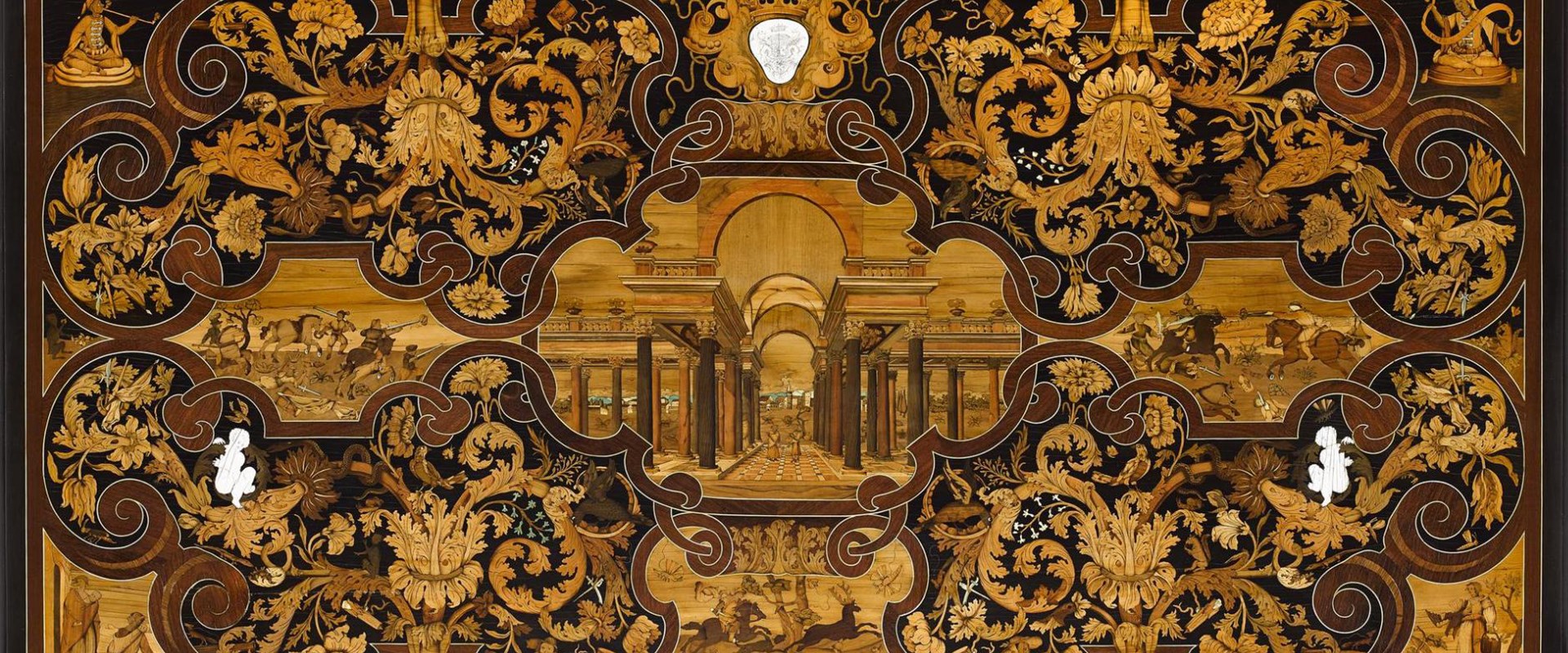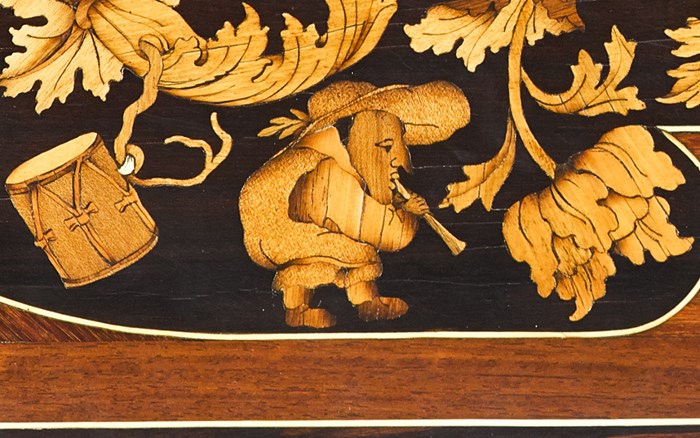Key in a search term below to search our website.
Key in a search term below to search our website.

This rare 17th-century table is an exceptional example of exuberant baroque design.
Date
1685-1688
Made in
Venice
Made by
Lucio De Lucci and Andrea Brustolon (1662-1732)
Made from
The top is made from European and exotic hardwoods, supplemented with stained horn, ivory and pewter details. The base is made from carved boxwood.
Acquired
Acquired jointly in 2012 by National Museums Scotland and the V&A, with the aid of the Heritage Lottery Fund, the Art Fund, the National Museums Scotland Charitable Trust (the Lindsay Endowment), the Wolfson Foundation and the Edinburgh Decorative and Fine Arts Society.
Museum reference
On display
Art of Living, Level 5, National Museum of Scotland
Did you know?
The table was once part of a group of six. However, our table and its pair, now in the collection of the V&A, are the only ones to retain their original bases.
This grand baroque table is one of a pair acquired jointly in 2012 by National Museums Scotland and the V&A, with the aid of the Heritage Lottery Fund, the Art Fund, the National Museums Scotland Charitable Trust (the Lindsay Endowment), the Wolfson Foundation and the Edinburgh Decorative and Fine Arts Society.

Above: Console table with marquetry top and carved boxwood base. Base attributed to Andrea Brustolon, c. 1688

Above: Console table with marquetry top and carved boxwood base, with a central subject depicting an architectural perspective, celebrating the Venetian conquest of Morea: Italian, Venice, top by Lucio de Lucci, c. 1688
The pair of tables, made in Venice between 1685 and 1688, were once part of a group of six. Their elaborate marquetry tops depict scenes of warfare between Venice and the Ottoman Empire for control of the Greek Peloponnese. The tables may have been made for the commander of the Venetian forces during the 1680s, Doge Francesco Morosini.

Above: Console table with marquetry top and carved boxwood base, with a central subject depicting an architectural perspective, celebrating the Venetian conquest of Morea: Italian, Venice, top by Lucio de Lucci, c. 1688
The marquetry, which is signed by maker Lucio de Lucci, uses ebony, rosewood, walnut and fruitwoods with ivory, stained horn, and pewter. It is based on printed sources, including even tiny details such as the little men playing musical instruments among the foliage and birds. These were taken from a set of prints etched by Jacques Callot in Florence in 1616 and entitled Varie figure Gobbi (‘Various hunchbacked figures’).

Above: Figure playing a pipe on the table.
The boxwood base is attributed to the celebrated sculptor Andrea Brustolon (1662-1732), described as ‘the Michelangelo of wood’ by Balzac in the 19th century, about the time the tables came to Britain. Acquired by the 5th Duke of Buccleuch in 1833, they remained at Dalkeith Palace until sold by the 8th Duke in 1971.

Above: Console table with marquetry top and carved boxwood base, with a central subject depicting an architectural perspective, celebrating the Venetian conquest of Morea: Italian, Venice, top by Lucio de Lucci, base attributed to Andrea Brustolon, c.1688.